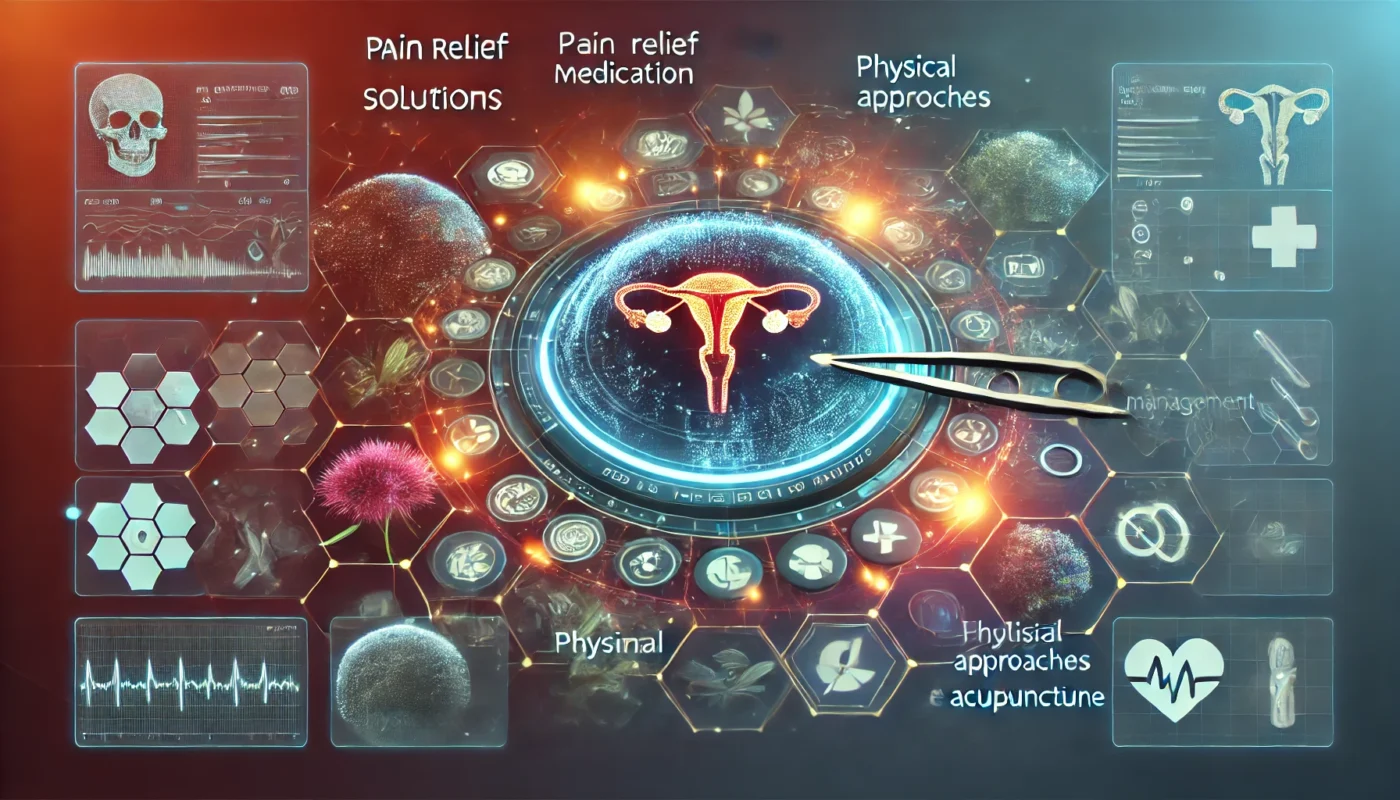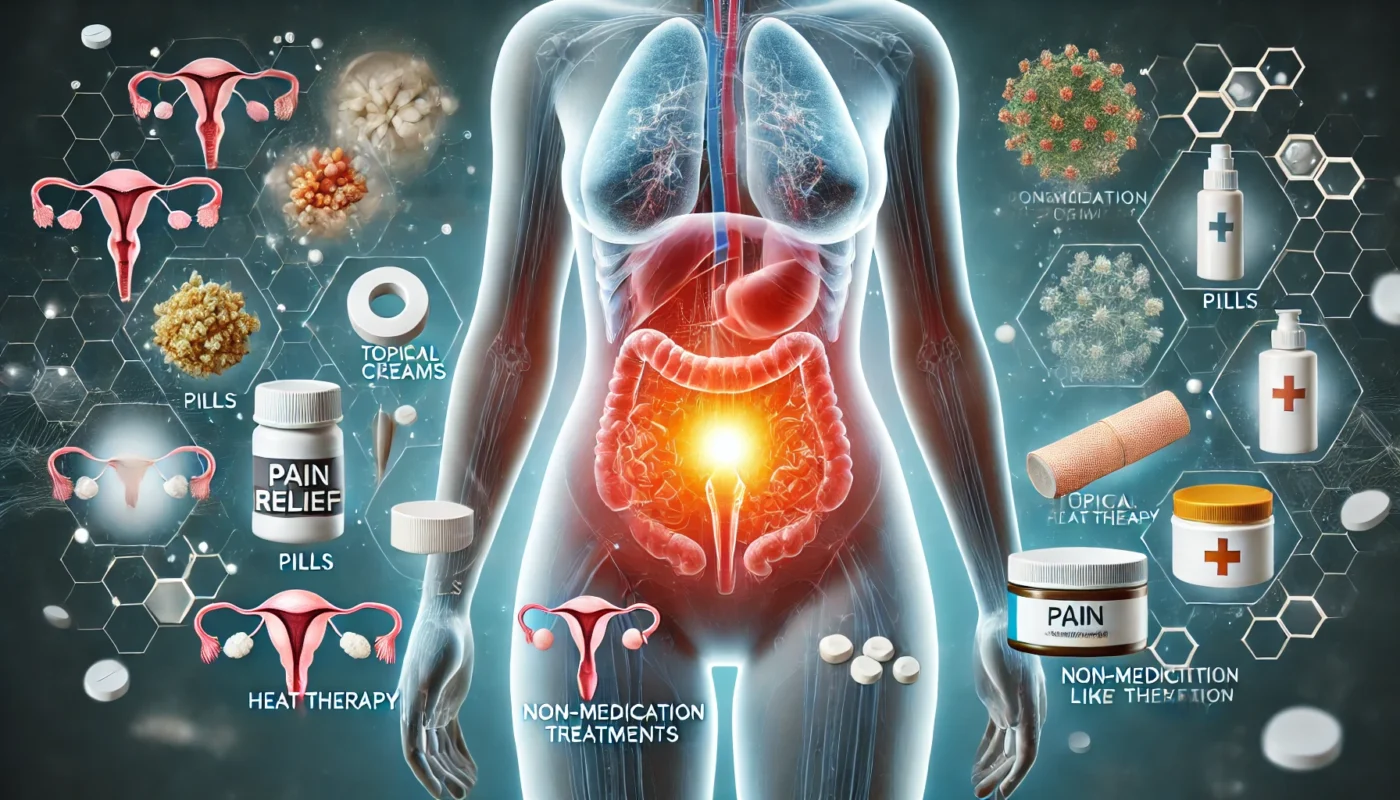Undergoing a hysterectomy is a significant medical procedure that can bring about both physical and emotional changes. Among the most immediate concerns post-surgery is managing pain effectively. It is crucial to understand the various pain relief options available to ensure a smooth recovery process. This article delves into the different approaches to pain control after a hysterectomy, encompassing both traditional and alternative methods.
You may also like: Understanding Long-Term Pain Relief Options
The Importance of Pain Management
Pain management post-hysterectomy is not just about comfort—it’s pivotal for promoting healing, minimizing stress on the body, and preventing complications. Effective pain control can enhance mobility, facilitate faster recovery, and improve overall well-being.
Promoting Healing and Recovery
Pain can hinder the body’s natural healing processes by increasing stress and preventing adequate rest. By effectively managing pain, patients can sleep better, which is essential for tissue repair and overall recovery. Good pain management also reduces the risk of chronic pain developing, which can prolong the recovery period.
Minimizing Stress on the Body
Stress from unmanaged pain can cause a cascade of negative physiological responses, such as increased blood pressure and heart rate. These stress responses can complicate recovery and lead to additional health issues. By controlling pain, patients can maintain a stable physiological state, which is conducive to healing.
Preventing Complications
Uncontrolled pain can lead to complications such as deep vein thrombosis due to reduced mobility and respiratory issues from shallow breathing caused by discomfort. Effective pain management encourages movement and deep breathing exercises, which are crucial in preventing such complications.
Pain Medications: The Conventional Route
Pain medication after hysterectomy often begins with prescription medications. Physicians typically prescribe a combination of opioids and non-opioid analgesics to manage moderate to severe pain. Here’s a closer look at these options:
Opioids: Powerful Pain Relievers
Opioids are often prescribed for managing severe pain immediately following surgery. While effective, they come with potential side effects, including drowsiness, constipation, and risk of dependency. These medications are typically used for short-term relief to minimize risks. It’s crucial for patients to adhere strictly to their prescribed dosage and schedule to avoid dependency issues.

Non-Opioid Analgesics: Balancing Pain Control
Non-opioid analgesics such as acetaminophen and NSAIDs like ibuprofen are often used alongside opioids to provide balanced pain relief. These medications help in reducing inflammation and provide mild to moderate pain relief, thereby reducing the overall need for stronger medications. Patients should be aware of potential side effects, such as gastrointestinal issues with NSAIDs.
Monitoring and Adjusting Medication Use
Both types of medications are integral for the initial phase post-surgery, but it’s essential to monitor their use closely. Regular consultations with healthcare providers can ensure that the pain management plan is adjusted as needed to reduce medication reliance as healing progresses.
Transition to Less Intensive Pain Control
As the initial intense pain subsides, the transition to less intensive pain relief methods becomes feasible. This is when alternative approaches can play a significant role.
Gradual Reduction of Medication
As pain levels decrease, healthcare providers may begin tapering off medications. This gradual reduction helps in preventing withdrawal symptoms from opioids and minimizes potential side effects from prolonged use of analgesics. Patients should communicate openly about their pain levels to facilitate this transition smoothly.
Integrating Non-Pharmacological Methods
Non-pharmacological methods can be integrated into the pain management plan to complement decreasing medication use. Techniques such as cold and heat therapy, gentle physical activity, and relaxation exercises can significantly aid in managing residual pain. These methods also empower patients to take an active role in their recovery.
Monitoring Progress and Adjustments
Regular follow-up appointments are crucial during this transition phase. Monitoring progress allows healthcare providers to make necessary adjustments to the pain management plan. This ensures that patients are comfortable and that recovery is proceeding without unnecessary setbacks.
Non-Pharmacological Pain Control Methods
Non-pharmacological methods are invaluable in managing pain without the side effects associated with medications. These include:
Cold and Heat Therapy: Simple yet Effective
Cold packs can be applied to reduce swelling and numb pain, especially during the initial post-operative period. As recovery progresses, heat therapy can be introduced to soothe muscle tension and promote circulation. Patients should be advised on the correct application techniques to avoid skin damage.
Physical Therapy: Movement for Healing
Engaging in physical therapy can aid in reducing stiffness and improving mobility. A tailored physical therapy program can help patients regain strength and range of motion, which is crucial for returning to daily activities. It’s important for patients to follow their therapist’s guidance to prevent injury.
Relaxation Techniques: Mind Over Matter
Relaxation techniques such as deep breathing, meditation, and guided imagery can help lower stress levels and pain perception. These practices promote a sense of calm and well-being, which can enhance the body’s natural healing processes. Patients may find it helpful to incorporate these techniques into their daily routine.
Holistic and Alternative Approaches
In addition to conventional pain medications, there are several holistic and alternative approaches that can complement your pain management strategy post-hysterectomy.
Acupuncture: An Ancient Practice
Acupuncture, an ancient Chinese practice, involves inserting thin needles into specific points on the body to alleviate pain. Research indicates that acupuncture can be effective in reducing postoperative pain and may decrease the need for medications. It’s important to consult with a qualified practitioner to ensure safe and effective treatment.

Herbal Supplements: Nature’s Aid
Certain herbal supplements have been shown to aid in pain relief. For example:
Turmeric: Anti-Inflammatory Benefits
Turmeric is renowned for its anti-inflammatory properties, which can help reduce swelling and discomfort. It’s often consumed as a spice in food or as a supplement. Patients should discuss its use with their healthcare provider to avoid interactions with other medications.
Ginger: A Natural Pain Reliever
Ginger, another powerful anti-inflammatory agent, can assist in pain reduction. It’s commonly consumed in teas, foods, or supplements. Like turmeric, it’s essential to consult with a healthcare provider before incorporating ginger into the pain management regimen.
Mind-Body Techniques: Bridging Mental and Physical Health
Mind-body techniques emphasize the connection between mental and physical health. Practices such as yoga, tai chi, and mindfulness meditation can improve pain management by promoting relaxation and reducing stress. These practices can be tailored to suit individual capabilities and preferences, making them accessible for most patients.
Nutrition’s Role in Recovery
A balanced diet rich in nutrients can support the body’s healing process and enhance pain management. Focus on incorporating:
Anti-Inflammatory Foods: Healing from Within
Incorporating anti-inflammatory foods such as leafy greens, nuts, and fish rich in omega-3 fatty acids can aid in reducing inflammation and promoting healing. These foods provide essential nutrients that support the immune system and tissue repair.
Hydration: Essential for Recovery
Adequate fluid intake is crucial for maintaining hydration, which is essential for tissue repair and overall recovery. Staying well-hydrated can help reduce the risk of complications such as urinary tract infections, which can occur post-surgery.
Tailoring a Nutritional Plan
Patients should work with a nutritionist or healthcare provider to tailor a nutritional plan that supports their recovery. This personalized approach ensures that dietary needs are met and that any potential food-drug interactions are avoided.
Creating a Personalized Pain Management Plan
Developing a comprehensive pain management plan tailored to your specific needs is crucial. Here are steps to consider:
Consult Your Healthcare Provider: Expert Guidance
Discuss all possible options, including medications and alternative therapies, with your healthcare provider. This consultation is vital for understanding the risks and benefits of each option and for creating a well-rounded plan that addresses all aspects of pain management.

Set Realistic Expectations: Understanding the Healing Journey
Understanding that pain levels can fluctuate and complete relief might not be immediate is essential. Setting realistic expectations helps in coping with the recovery process and prevents frustration. Patients should be prepared for a gradual improvement in pain levels.
Monitor and Adjust: Staying Attuned to Your Body
Keep track of what methods provide relief and adjust your plan as needed. Regularly assessing pain levels and the effectiveness of different strategies ensures that the management plan remains effective. Open communication with healthcare providers is key to making necessary adjustments.
Conclusion
Pain control after a hysterectomy is a multifaceted approach that combines traditional medications with holistic and alternative therapies. By understanding and implementing various pain relief strategies, you can enhance your recovery journey and return to your daily activities more comfortably. Always engage with your healthcare provider to tailor a plan that best suits your individual needs and preferences.
Remember, your recovery is unique, and finding the right balance between conventional and alternative methods can lead to a smoother, more effective healing process. Prioritizing effective pain management allows you to focus on healing and returning to the activities you enjoy with confidence.
Further Reading:
Managing Pain After a Hysterectomy
hysterectomy, pain relief, pain management, post-surgery recovery, opioids, non-opioid analgesics, alternative therapies, acupuncture, herbal supplements, nutrition, physical therapy, holistic health, anti-inflammatory foods, patient care, recovery strategies
Important Note: The information contained in this article is for general informational purposes only, and should not be construed as health or medical advice, nor is it intended to diagnose, prevent, treat, or cure any disease or health condition. Before embarking on any diet, fitness regimen, or program of nutritional supplementation, it is advisable to consult your healthcare professional in order to determine its safety and probable efficacy in terms of your individual state of health.
Regarding Nutritional Supplements Or Other Non-Prescription Health Products: If any nutritional supplements or other non-prescription health products are mentioned in the foregoing article, any claims or statements made about them have not been evaluated by the U.S. Food and Drug Administration, and such nutritional supplements or other health products are not intended to diagnose, treat, cure, or prevent any disease.

